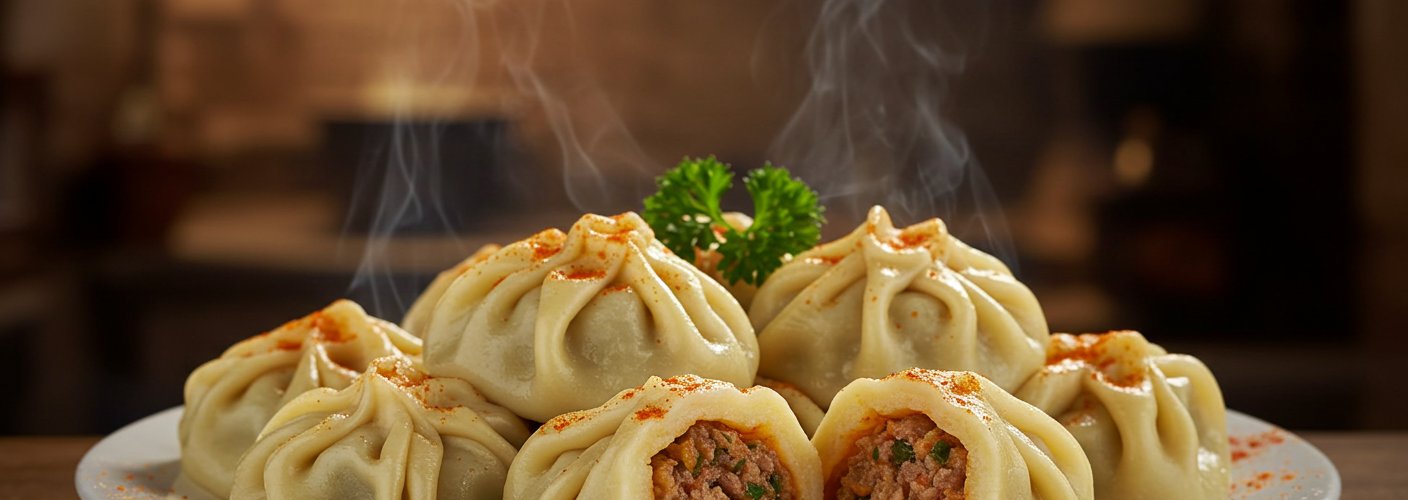Manti, a culinary gem originating from Central Asia and found in various forms across different cultures, has captured the hearts and palates of food lovers worldwide. These delightful dumplings, particularly popular in Turkish, Uzbek, and Armenian cuisines, are a testament to the rich traditions of savory stuffed dishes, and today, we’re inviting you to explore the specialty of lamb-stuffed manti.
At its core, manti consists of a delicate dough enveloping a fragrant filling, traditionally made from minced lamb, mixed with aromatic spices and herbs. The choice of lamb not only adds depth of flavor but also showcases the rich culinary heritage and pastoral traditions of the regions where manti is most beloved. Imagine biting into a perfectly steamed dumpling, the soft dough yielding to reveal tender lamb infused with garlic, onions, and a hint of cumin – a taste that is nothing short of delectable.
The Making of Manti
Making manti is both an art and a labor of love. The process begins with preparing the dough, which typically consists of flour, water, and a pinch of salt. Once the dough is kneaded to the right consistency, it is rolled out into thin sheets, from which small squares or circles are cut to form the wrappers.
The filling is where the magic happens. Freshly minced lamb is combined with finely chopped onions, garlic, black pepper, and seasoning to create a mixture bursting with flavor. Some variations might incorporate fresh herbs like parsley or dill for an extra layer of freshness.
Each wrapper is filled with a small amount of the lamb mixture before being carefully sealed. The sealing technique varies – from pleating and twisting to simple folds, each chef might add their signature style. Once shaped, the manti can be steamed, boiled, or even baked to create unique textures.
Culinary Versatility
While lamb-stuffed manti is a classic, there’s a world of versatility waiting to be explored. Some regions may offer alternatives using beef, chicken, or even vegetarian fillings, reflecting local ingredients and preferences. Manti can be served in a variety of ways; they are often enjoyed drizzled with a rich yogurt sauce, topped with a sprinkling of paprika, or served in a hearty broth, adding warmth and comfort to your dining experience.
A Cultural Experience
Manti is not just food; it embodies a cultural experience that spans generations. In many households, making manti is a communal affair, with family members gathering to roll dough and fill dumplings. This brings about a lively atmosphere filled with laughter, storytelling, and the sharing of recipes passed down through the ages.
Eating manti is often a multi-sensory experience, with its delightful aromas and vibrant presentation. It invites diners to not just enjoy a meal, but also partake in a longstanding culinary tradition, making each bite flavorful not only in taste but also in heritage.
Conclusion
If you have yet to experience the tantalizing taste of lamb-stuffed manti, it’s time to embark on this delicious journey. Whether you’re exploring recipes in your own kitchen or savoring them at a local eatery, these stuffed dumplings are sure to delight. Manti is more than just a dish; it’s a celebration of culture, flavor, and, most importantly, the joy of good food shared among friends and family. So, roll up your sleeves and get ready to dive into this delightful culinary adventure!




Add comment